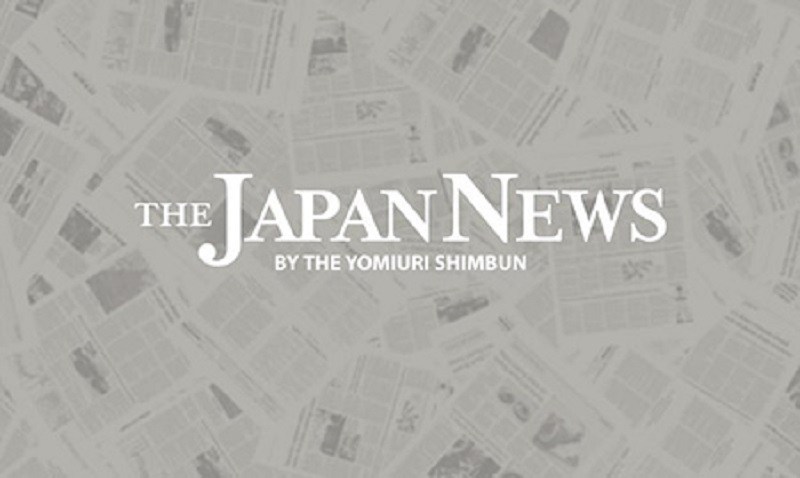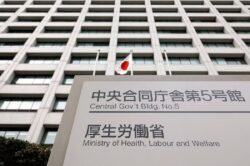
14:20 JST, January 22, 2021
In 2020, the world was racked by the unprecedented novel coronavirus pandemic. In its initial stage, even experts did not expect the virus to plunge the world into today’s still-raging situation.
As I conduct research in both Kyoto and San Francisco, I continued shuttling between Japan and the United States every month until early February 2020, which was the last time I went to the United States.
At the time, I attended a seminar there given by a friend of mine who is an authority on virology. Speaking of the new infection, he concluded: “We need to keep a close eye on it, but compared with influenza [which had already caused more deaths], there is no need to panic. I wouldn’t recommend the use of face masks for protection [against the novel coronavirus].”
However, the situation changed rapidly in the following month as coronavirus infections exploded in New York and Europe and patients flooded hospitals. By the end of 2020, cumulative COVID-19 deaths in the United States had surpassed 300,000 and wearing masks turned out to be one of the most important preventive measures.
The pandemic has spread to about 200 countries and regions in the world. Britain’s Oxford University keeps updating composite coronavirus response indices, based on a set of indicators of policy implementation, to show country-by-country values from 0 (no countermeasures) to 100 (strictest measures). In recent months, the stringency indices have stood anywhere from about 60 to about 90 for European countries and the United States, meaning that they have had strict policies in place. However, those for Japan have ranged from about 30 to about 60, indicating that its policies have been relatively mild.
European and U.S. experts regard the per capita rates of virus testing as the most important criterion in COVID-19 mitigation. Testing numbers in Japan, albeit up since the autumn of 2020, still represent a mere one-tenth or similar fractions of those in Europe and the United States. On the other hand, the country-by-country scales of coronavirus damage present a completely different picture. As of the end of 2020, Japan had managed to keep per capita deaths to about one-fortieth of the comparable figures for the United States and Britain.
‘Factor X’ at play in Japan
Why have there been fewer COVID-19 deaths in Japan despite less stringent responses and less prevalent testing? This fact cannot be explained as an accidental or fortuitous phenomenon. There must be some factors at play in Japan to explain the disparity. I think there must be multiple factors, rather than a single one. I therefore refer them collectively as “Factor X.”
Measures to contain the new virus are painful, in that economic and social activity has to be restricted. As such, it is extremely important to figure out Factor X when exploring such goals as keeping the country’s medical system from crumbling on the one hand and ensuring that economic and social activity is maintained on the other.
Will Factor X continue in its current form? This is also an important question that has to be answered. As mentioned earlier, Japan’s total coronavirus deaths are about one-fortieth of those in the United States and Britain. This does not mean, however, that Japan is 40 times more resistant to the novel coronavirus. Mitigation and spread of the pandemic can be likened to a seesaw.
Up until now, Japan’s pandemic seesaw has tilted toward the mitigation side thanks to the weight of Factor X. If Factor X weakens in the future, the tilt of the seesaw will be reversed, potentially triggering an explosive rise in infections in Japan.
As of Jan. 15, the weekly average death tolls from COVID-19 per population showed that the figure in Japan had soared to about one-twentieth of those in Europe and the United States. In fact, Japan’s weekly per capita death tolls have exceeded those in India, which is currently second only to the United States in terms of cumulative infections. Japan’s coronavirus countermeasures now face a critical phase.
Importance of masks
What first comes to my mind as an element of Factor X is the fact that the rate of wearing masks is traditionally high in Japan. It is known that droplets generated during speech and other movements of the mouth are the main source of coronavirus transmission and that the virus can be spread by pre-symptomatic or asymptomatic people as well. So, it is particularly important to put on masks to prevent droplet transmission, regardless of whether one is infected with the virus.
European countries and the United States have no custom of wearing masks. In their initial coronavirus responses, prestigious institutions such as the World Health Organization and the U.S. Centers for Disease Control and Prevention did not recommend that people with no COVID-19 symptoms wear masks.
In Japan, people traditionally have little reluctance to use masks — even prior to the coronavirus outbreak, many people habitually wore masks to protect themselves from the common cold and hay fever. Around February last year, the country witnessed an acute mask shortage as Japanese people rushed to buy them. The culture of using masks is likely to remain advantageous for Japan in combating the new virus.
A second key element of Factor X is the high level of compliance in Japan. In the spring of 2020 when Japan was hit by the first wave of infections, an overwhelming number of people voluntarily refrained from going out and an overwhelming number of shops and other facilities voluntarily closed their doors, even though the state of emergency declared by the government was not legally binding and did not involve any punitive measures. The reasons behind this phenomenon included proactive warnings from experts, the virus-related deaths of prominent people, and the leadership shown by central and local government chiefs in prioritizing measures for infection prevention and control.
Less wary of pandemic
But this element appears to have become weaker now than in the spring of 2020. Japanese people, young ones in particular, are now less wary of coronavirus infections, as they witnessed far fewer first-wave infection cases and deaths from COVID-19 than in Europe and the United States. Warnings from experts are no longer heeded, while many of Japan’s political leaders tend to be too slow in making decisions, as they are caught in a dilemma between facilitating economic vitality and pursuing infection control.
A certain kind of genetic background may also be an element of Factor X. We have already seen a number of research articles focusing on candidate genes or genome regions in this regard. If human genetic backgrounds are one element of Factor X, this element will likely be here to stay in the future because such backgrounds do not change significantly within a year or two.
However, U.S. data show that COVID-19 mortality rates among white people have been lower than those among Asians living in the United States. This may imply that genetic attributes are not an important element of Factor X.
Yet another candidate element of Factor X involves what are considered to be preexisting immunological attributes. Coronaviruses similar to COVID-19 had become known as causes of the common cold well ahead of the emergence of the new virus. There is a hypothesis — which is supported by multiple research articles — that immune reactions to these preexisting coronaviruses protect against the new one as well, preventing infection and inhibiting an increase in severity in the event of infection.
But there have been no research articles published yet to prove that Japanese people’s innate immune systems give them stronger protection against the novel coronavirus than Europeans and Americans. I look forward to seeing this aspect researched from now on. Immune reactions often weaken as time goes by. Therefore, if they constitute an element of Factor X, the strength of immune reactions may have already waned, compared with the spring of 2020.
Is the seesaw tilting?
Apart from Factor X, two determinants can reverse the tilt of the pandemic seesaw. One of them is a seasonal factor — people with respiratory infections, including seasonal influenza, are on the increase in winter. There can be multiple reasons for such a seasonal surge, including reduced function of mucosal defense mechanisms, prolonged lifespans of viruses and droplets scattering further due to cold, dry weather.
The other determinant is virus gene mutation. Human bodies continue changing as they go through the process of cell division little by little. Most of such changes are harmless. But there are cases where abnormalities accumulate in certain cell systems over the course of decades, which can ultimately cause cancer.
In contrast, virus genes mutate rapidly. They tend to be prone to alter the transmissibility and virulency of each virus in a short time. In fact, the variant of the novel coronavirus thought to have first emerged in Britain in September last year appears to be more transmissible. The variant has been spreading fast from Britain to other parts of the world since late 2020.
The tilt of the COVID-19 infection seesaw in Japan now seems to be on the verge of changing from mitigation to spread. Once the reversal actually occurs, the situation will swiftly deteriorate, threatening to lead to a further explosion of infections.
If there is an absolute reversal of the tilt of the seesaw, tremendous strength will become necessary to resolve the crisis. Will the latest state of emergency, which is less strict and less widespread than the previous one, and the tightening of coronavirus-related restrictions on entries from abroad, be sufficient to tilt the seesaw further toward a situation in which the pandemic is brought under control? Japan is now facing a moment of truth.
"Society" POPULAR ARTICLE
-

M4.9 Earthquake Hits Tokyo, Neighboring Prefectures
-

M7.5 Earthquake Hits Northern Japan; Tsunami Waves Observed in Hokkaido, Aomori and Iwate Prefectures
-

Tsukiji Market Urges Tourists to Avoid Visiting in Year-End
-

Israeli Tourists Refused Accommodation at Hotel in Japan’s Nagano Pref., Prompting Protest by Israeli Embassy and Probe by Prefecture
-

M5.7 Earthquake Hits Japan’s Kumamoto Pref., Measuring Upper 5 Intensity, No Tsunami Expected
JN ACCESS RANKING
-

Keidanren Chairman Yoshinobu Tsutsui Visits Kashiwazaki-Kariwa Nuclear Power Plant; Inspects New Emergency Safety System
-

Imports of Rare Earths from China Facing Delays, May Be Caused by Deterioration of Japan-China Relations
-

University of Tokyo Professor Discusses Japanese Economic Security in Interview Ahead of Forum
-

Japan Pulls out of Vietnam Nuclear Project, Complicating Hanoi’s Power Plans
-

Govt Aims to Expand NISA Program Lineup, Abolish Age Restriction























